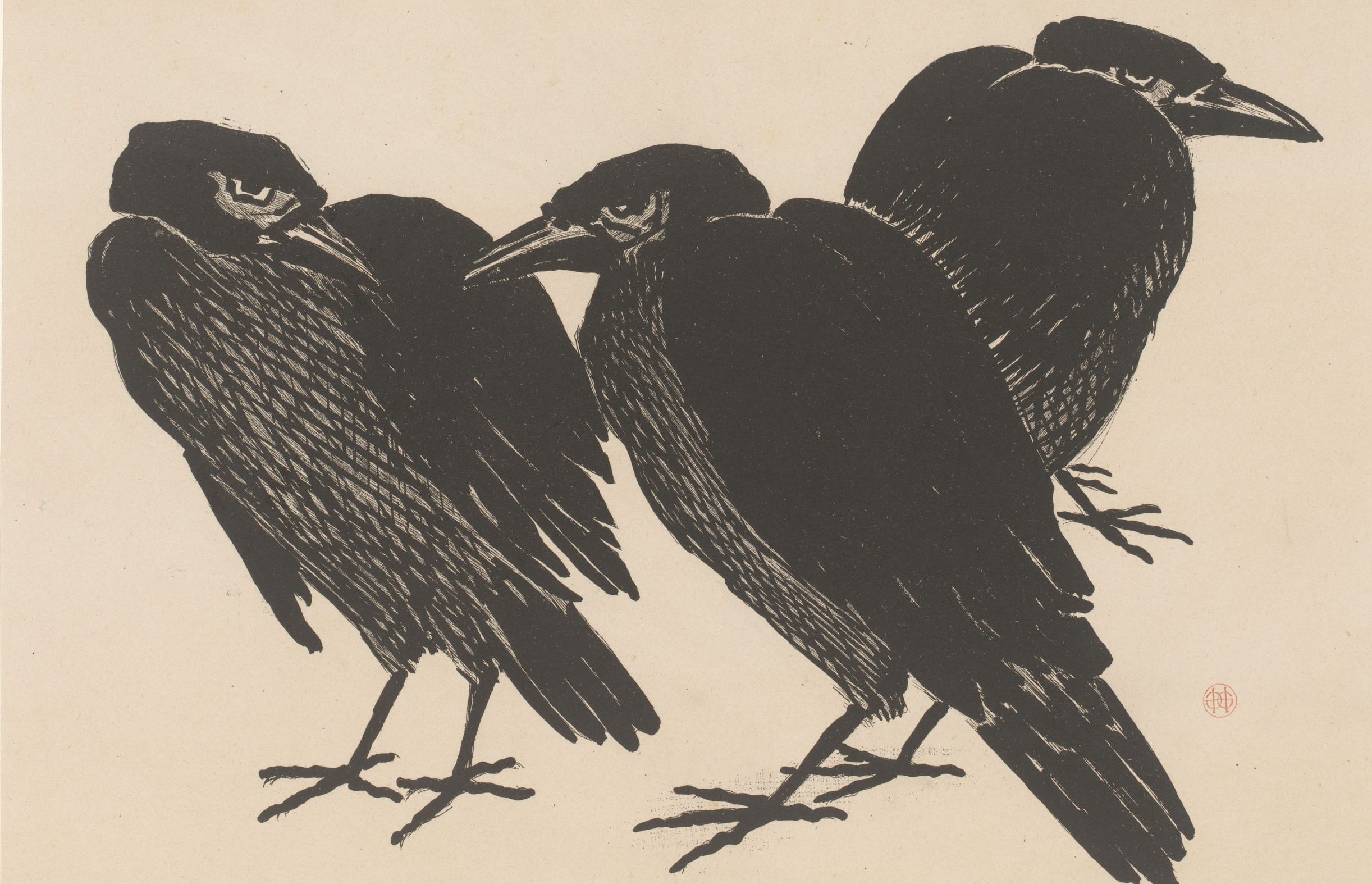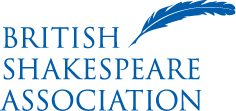
Darren Freebury-Jones: Plucking Shakespeare’s Feathers
23rd March 2023
Dr Darren Freebury-Jones is Lecturer in Shakespeare Studies at the Shakespeare Birthplace Trust in Stratford-upon-Avon, Fellow of the Royal Historical Society, and a member of the BSA’s Education Committee. He is the author of Reading Robert Green: Recovering Shakespeare’s Rival (Routledge, 2022) and Shakespeare’s Tutor: The influence of Thomas Kyd (Manchester University Press, 2022).
I am currently working on a book titled Shakespeare’s Borrowed Feathers. The project uses the first reference to Shakespeare as an actor-dramatist, in Greene’s Groatsworth of Wit, as its structural fulcrum:
there is an upstart Crow, beautified with our feathers, that with his Tygers heart wrapt in a Players hyde, supposes he is as well able to bombast out a blanke verse as the best of you: and being an absolute Johannes fac totum, is in his owne conceit the only Shake-scene in a country.
The discussions that arose between Elizabethan writers in the wake of this notorious pamphlet’s publication, and the theories it has spawned among generations of Shakespeare scholars, provide the pillars of my study: authorship, collaboration, adaptation, and imitation. The book is about Shakespeare’s borrowed feathers and the community of playwrights working in early modern London. I explore Shakespeare’s engagement with the plays of these contemporary dramatists, dealing with matters of authorship, varying modes of collaboration (such as co-authorship and revision), as well as the ways in which Shakespeare was influenced by, imitated, and adapted, plays by fellow authors, beginning with John Lyly and concluding with John Fletcher.
How might we go about plucking a crow and determining the origins of each of his feathers? Literary indebtedness can be measured in a variety of ways, be it through allusions, studies of similarities in dramatic narrative and structure, characterization, and explorations of the ways in which dramatists appear to have parodied each other. I rely on each of these approaches, but a major point of difference is that Shakespeare’s Borrowed Feathers provides a systematic account of Shakespeare’s debts to his contemporaries through the use of modern electronic corpora. Pervez Rizvi has developed an electronic corpus of 527 plays dated between 1552 and 1657, titled Collocations and N-grams, which is an invaluable aid for researchers investigating links between early modern plays. The automated results allow scholars to check for every phrase shared between surviving plays of the period and to establish just how many times that phrase occurs. This database therefore allows researchers to examine objective, factual data linking early modern plays according to such factors as common authorship, chronology, genre, and influence. I aim to provide the most accurate account of the influence of contemporary playwrights’ language on Shakespeare’s dramas yet conducted by consulting Rizvi’s spreadsheets for plays composed by each of the dramatists I survey; each pair of plays is ranked according to the number of unique phrases (i.e. occurring in just two plays in the corpus) they share.
The results are fascinating and tend to validate and extend previous hypotheses concerning intertextual relations between plays. I have discovered that Shakespeare was even more of a magpie at the beginning of his career than suspected, and I attribute this in large part to the rhetorical training he received during his grammar school education and his background as an actor, a profession that required an acute reliance on aural memory. Several early modern dramatists were also actors and would develop an intimate familiarity with plays in which they had performed. The necessity for actor-dramatists to possess extensive verbal memories meant that they could draw from a variety of plays when composing their own works. To offer some examples, it should be noted that Thomas Kyd’s Soliman and Perseda does not seem to have been as popular with audiences and readers as his The Spanish Tragedy, judging by its printing history and contemporary allusions. Nevertheless, the play had a significant influence on Shakespeare. In the spreadsheet for Soliman and Perseda, one-fifth of the top twenty plays are by Shakespeare: The Comedy of Errors, The Two Gentlemen of Verona, Henry V, and Troilus and Cressida. In Shakespeare’s early plays we find striking borrowings that are unique in the theatrical vernacular of the period, such as when, near the conclusion of The Two Gentlemen of Verona, Thurio says of Silvia: ‘I claim her not, and therefore she is thine’. Here he is echoing the moment Erastus laments losing a love token in Kyd’s play: ‘I kept it not, and therefore she is lost’.
Examples of borrowings from other Elizabethan playwrights can be provided, such as the line in Henry VI Part Three, ‘Sham’st thou not, knowing whence thou art extraught’, and a line in The Troublesome Reign of King John, attributed to George Peele: ‘And when thou knowest from whence thou art extraught’. The verbal evidence also validates scholarly observations on Shakespeare’s borrowings from that chronicle history play when he composed Richard II. Bolingbroke commands the execution of Bushy and Green, who ‘stained the beauty of a fair queen’s cheeks’. Just as Shakespeare likens the kingdom to an unweeded garden, King John speaks of ‘ambitious weeds’ that can ‘stain the beauty of our garden plot’. Examined in context, we can see that Shakespeare’s borrowings relate to not only wording but to imagery at the heart of The Troublesome Reign of King John and, subsequently, Richard II.
Shakespeare often seems to gaze wistfully towards past dramas for inspiration. For instance, while Lyly established several precedents for Shakespeare’s plays, there is little indication that Shakespeare was overly familiar with his dramatic language. That is until, as I have discovered, Shakespeare started composing plays for the indoor Blackfriars Theatre, where Lyly’s plays had previously been performed by the Children of Paul’s. I have also discovered that Shakespeare owes as great a debt to Kyd’s plays, if not greater, than those of Christopher Marlowe, which has important implications for our understanding of Shakespeare’s dramatic development. The book deals with the thorny issue of distinguishing Shakespeare’s early style from Kyd and Marlowe’s, the two playwrights he most closely emulated at the beginning of his career and with whom scholars have long proposed he collaborated.
In my investigations of Shakespeare’s early collaborations, I have found that whilst the idea of Shakespeare guiding younger dramatists in his later co-authored plays is now accepted, there remains some unwillingness to accept that Shakespeare himself was guided in earlier collaborations. Scholars still prefer to imagine Shakespeare improving, or even salvaging, the work of more experienced dramatists, rather than learning from the process of co-authorship at the beginning of his career. This is something I interrogate in tandem with older scholarship reluctant to recognize Shakespeare as a borrower, scholarship that instead assumes other dramatists borrowed from him. Advances in technology and the sound chronology developed by Martin Wiggins mean that we can now gain insights into the directions of influence in the early modern dramatic canon that evaded previous studies.
My research thus reveals that Shakespeare borrowed from Elizabethan contemporaries such as Marlowe, Kyd, and Peele to a remarkable degree. However, having delved deeper into Shakespeare’s career, there is little evidence, on a verbal level at least, of Shakespeare attending closely to the plays of Jacobean contemporary playwrights. We can interpret these results in varying ways: perhaps Shakespeare did not have easy access to plays performed by rival and children’s playing companies. As an actor Shakespeare would of course be working when plays were usually performed, meaning that he was more likely to be influenced by his own company’s repertory than by others. However, it seems likely to me that Shakespeare, with his keen commercial eye, would attend the plays of other companies when he had afternoons off. Perhaps then the results are indicative of the development of Shakespeare’s distinctive idiom later in his career. Although Shakespeare dabbled in popular genres such as city comedies in The Merry Wives of Windsor and Measure for Measure, and masques in The Tempest, his stylistic feathers are of a distinctly different hue to those of dramatists such as Thomas Dekker, John Marston, and Ben Jonson. Even in the cases of Jonson’s Every Man in his Humour and Sejanus, in which we know Shakespeare acted, we do not find the same kind of verbal recall as is evident in Shakespeare’s engagements with dramatic forebears.
Having investigated Shakespeare’s dramatic relationship with Thomas Middleton and Fletcher in order to increase our understanding of the working methods shared between these playwrights, I plan to conclude my study by looking at the ways in which the compilers of the First Folio helped to create the image of Shakespeare as a solitary genius. It seems to me that Shakespeare’s dramatic identity was shaped in large part by the people with whom he collaborated most.
Darren Freebury-Jones
The Shakespeare Birthplace Trust
Header Image: Rijksmuseum (Object Number RP-P-1972-258).
